You’re on the operating table, the surgery is almost over. The procedure has gone well. The doctors and nurses are walking in liquid on the floor covered with antiseptic, your blood, and other fluids. As your doctor is making the final repairs, a nurse is at the computer typing in some data; then she turns to assist the doctor, steadying herself with one hand on the computer monitor. As she touches the doctor, the faulty PC sends its stray current through both of them and directly into your heart. They feel almost nothing, but you are especially vulnerable and in a few seconds, it’s too late, the damage has been done.
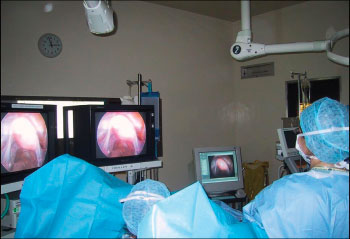
Photo 1. Computers are everywhere in our healthcare facilities.
How could this happen? Let’s examine the situation more closely and try to determine what might have gone wrong. In this unfortunate scenario, a number of things happened because of what people and organizations did and did not do. A special interest group of foreign computer manufacturers brought great pressure to bear on OSHA and bullied them into acceptingonlya “manufacturer’s declaration,” as evidence of product safety. (For those of you who don’t know, this is equivalent to the CE mark). A national healthcare organization worked hard to have leakage current requirements stripped from NFPA 99. An IT department put a regular computer in a patient area and the cord became pinched, causing the ground wire to contact a metal frame. It’s possible there were people on consensus document committees who allowed this happen for “political” or other unknown reasons. Some other people in healthcare safety knew what was going on, but were afraid to act against these organizations. So now, the biomedical engineers were not allowed to test the computer. The hospital administration and the IT department forced purchasing to order regular consumer-type computers for the operating rooms. The doctors and nurses did not even think to consider whether they might not be safe to use in the OR environment. You checked into the hospital not worrying about electrical safety of the equipment. In this story, you are now a victim of negligence and careless tampering with safety requirements. Too late.
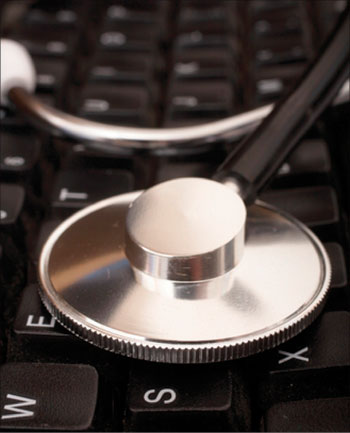
Photo 2. Medical use of computers
Maybe it’s not too late. Maybe we can influence people and organizations; maybe we can have an effect on the outcome. It will take perseverance and patience, and it will not be easy. Electricity is invisible, which makes attacks on electrical safety so prevalent. In the beginning of the modern use of electricity, many buildings and houses burned, and many basic improvements were made to prevent fires. At that point in time, people were very much aware of the hazards of electricity. It was feared and respected. In the twenty-first century, we have three decades of improved levels of safety and three decades of safety professionals who have helped to protect people from these hazards. These days, many people only think about electricity when the power goes out. Periodically, we need to re-educate the public and professions so that people in the workplace don’t become complacent.
Can computer and non-certified equipment in hospitals kill patients?Product safety and biomedical engineering experts know the answer is “yes,” so do designers and manufacturers of safety-certified medical equipment. Why then would an organization like ASHE (American Society for Healthcare Engineering) attempt to potentially cripple U. S. safety standards and pressure The Joint Commission (TJC) to have this testing stopped? At the same time, when it comes to the subject of inspection of equipment for U. S. certification and enforcement of existing laws, ASHE is silent. Why are ASHE and The Joint Commission not aggressively encouraging the proper testing and deployment of computer equipment in hospitals under existing regulations and safety standards?
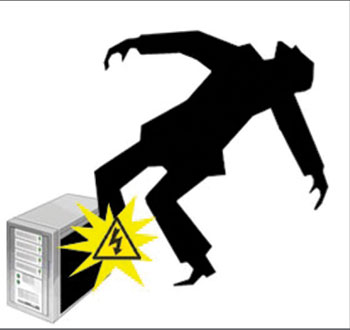
Photo 3. Incorrectly designed or improperly used products can cause injury or death
The following is a quote from a letter written in February 2009 by ASHE to The Joint Commission: “This is a rather timely subject as ASHE is working hard to debunk a lot of legend behind leakage current and with it remove it from NFPA 99…. Our proposal has passed the public comment stage and has been accepted by the technical committee. So we anticipate a significant reduction in requirements for the 2010 NFPA 99 and hope for elimination in the 2013 edition.” Clearly, this shows ASHE’s intention to reduce the present level of safety currently in place. It’s important to consider that ASHE likely has no electrical product safety professionals in their “working groups.”
The Joint Commission, formerly The Joint Commission on Accreditation of Healthcare Organizations (JCAHO), has also never taken a firm position on certification and testing of medical equipment; instead, relying on each organization to police itself and attempt to identify and maintain safety-certified equipment. A search of the JCAHO website (www.jointcommission.org) reveals that there are no references to safety of electrical equipment, UL Standards, certification of listed equipment, or leakage current. Also, there is no mention of 29CFR 1910 Subpart S, which requires all equipment in the workplace to be listed or labeled by a nationally recognized testing laboratory (NRTL). The termlisted equipmentmeans that equipment is certified by a U. S. NRTL, including the use of applicable standards, in this case UL 60601.
What isleakage current and how does it directly affect the human body? Leakage current is the amount of electrical current which is always present in a piece of equipment or system. Leakage current tests remove the protective ground to see how much current would flow through a person when the ground is disconnected. If a piece of equipment is designed with improper grounding or the grounding is compromised, this will result in direct or indirect harm to high risk and other patients. Normal use of portable, cord-connected equipment can lead to the risk of leakage current due to wear and tear on cords and plugs. Also, if a connection plug is incorrectly re-attached, exposure to leakage current will result. These anticipated conditions and the resulting leakage current can cause cardiac arrest.
Studies on the effects of leakage current on humans show that leakage current will cause cardiac arrest in certain patients, especially for high-risk patients. However, everyone involved with patients or present in these areas is exposed. For example, if a healthcare worker touches a piece of equipment with higher-than-safe leakage current and also touches the patient, the patient and the healthcare worker will be put at risk. If a piece of equipment is worn or damaged, the likelihood of shock or energy hazard increases. 1
Electrical safety standards are written due to deaths and/or because of obvious, imminent, scientifically verifiable threats to human life and well being. This applies to many aspects of product safety, including grounding, dielectric voltage withstand, leakage current, short circuit, abnormal conditions, single fault/multiple fault temperature/overload, explosion, radiation and chemical hazards, incorrect use of components and more.
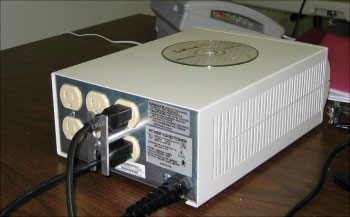
Photo 4. In some cases a UL 60601 listed isolation transformer can be used to limit potential exposure to leakage current, but the connected equipment can still be unsuitable for a patient area for a number of other reasons.
For medical equipment, the primary standard for many years was UL 544, Safety of Medical and Dental Equipment.2 This standard also requires that power supplies be certified as protecting any low-voltage circuits, and often sets requirements for medical grade cords, plugs and other components. UL 544 was an Underwriters Laboratories (UL) standard, a consensus product safety standard, and was created with cooperation from product safety engineers, design and manufacturing specialists, medical/biomedical and inspection authorities. Products that met this necessarily strict standard became the best performers in healthcare in the U. S. In the last edition of UL 544, leakage current for ground to chassis was 300 microamperes, (300 μA). Depending on the specific medical device, leakage current limits are as low as 10 μA. For example, a non-patient connected device like a spirometer (connect to the patient by a plastic tube/air only) requires a maximum of 300 μA leakage current from chassis to ground. An electrosurgical generator, for example, is in direct patient contact with applied voltage, so the limits are extremely low, in some cases as low as 10 μA.3
UL 60601 is the U. S. version of an internationally “harmonized” standard, from the original (International) IEC 601. The U. S. version contains national deviations to account for differing voltages and national requirements for the United States. The leakage current limits and electrical safety requirements are very similar to the UL 544 limits. The AAMI Standard, used by biomedical technicians, is similar to IEC 601, and requires a chassis to ground maximum of 500 μA.4 The advantage of the harmonized standards is the ability of testing laboratories to complete the final items for U. S. certifications. Despite the differences, the requirements for leakage current are now similar worldwide. Another result of this harmonization is that X-ray equipment, including portable X-ray units, are now subject to the 60601 requirements. NFPA99 has similar testing requirements and leakage current limits.5
Why is certain equipment not suitable for medical use?Why does medical equipment undergo different/more rigorous evaluation and testing than other categories of equipment? Why would unsuitable equipment be moved into ORs, ICUs and other patient exam areas?
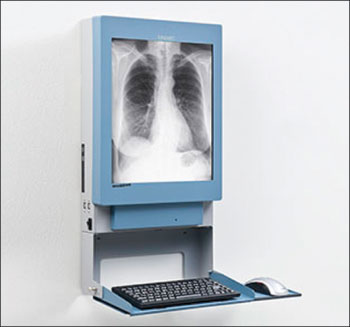
Photo 5. Healthcare facilities should only use suitable products, such as the Maxant Mediport shown here.
For medical equipment, added safeguards and testing are required. There are many areas where suchmedical gradeequipment needs to be used: operating rooms, emergency, intensive care units, and all patient care and exam rooms. Listed medical equipment often has special markings, such as “Do not use in the presence of flammable anesthetics,” and “Grounding reliability can only be achieved with the use of a hospital grade receptacle.” When you see this kind of equipment and hospital grade receptacles in the facility, then you will know that other equipment in these areas must meet the requirements for medical use, such as computers, computer monitors, x-ray film viewers, etc.
Many pieces of equipment do not belong in these areas, such as: microscopes or other laboratory equipment, regular “consumer” computers, office furnishings or lights not listed for medical use, and many other products.7Still, there are many healthcare facilities that have no incoming inspection for equipment, or no one on staff that would recognize anon-certifiedpiece of equipment. Many distributors do not even know the difference; while some do know and try to pass off CE marking as a certification mark. (CE is not a certification mark). Sometimes, physicians request very new or prototype equipment directly from a distributor or manufacturer, thus bypassing any incoming inspection by biomedical engineering or purchasing procedures that might be in place. Much of this new equipment has never been tested for safety, and can put the physician and the healthcare provider in the unfortunate position of potentially harming the patients they are trying to help.
In addition to more rigorous requirements for electrical safety, NRTL-certified devices have to meet requirements for electromagnetic interference and compatibility (EMI/EMC). This means that these devices have to be designed and tested to receive interference from other devices without malfunctioning, and have to function without interfering with other devices. Equipment not certified for medical use does not have to meet these requirements. Also, many devices not certified for medical use do not meet the requirements for enclosure construction, and can be easily damaged from fluids commonly used in healthcare facilities. This compromising of a device with fluid ingress can lead to short circuits and shock, even electrocution.
There are many examples of medical equipment suitable for use in patient areas. Cybernet makes a medical grade computer (www.cybernetman.com). Maxant Technologies manufactures medical display workstations (www.Maxant.com). Both of these companies have their products listed to UL 60601. These manufacturers understand the requirements, and have testing lab certifications specifically for healthcare facilities.
Brud Sturgis is the president of Maxant Technologies. Maxant designs and manufactures equipment especially for healthcare patient and operating room environments. Brud has answers to questions about designing and building medical devices to insure regulatory compliance.
Q. What does it take for a manufacturer to excel in designing and building medical devices?
A. We need to employ an educated and highly skilled and trained electrical and mechanical engineering team. They need to understand and apply regulations such as UL 60601, as they relate to the healthcare environment. We design a custom product to meet regulations; we assemble manufacturing talent, procedures and assembly capability to build and deliver the product. This includes developing relationships among component manufacturers and design teams. We also develop the capability for proper testing and verification of each product family and individual unit shipped, and we must be able to build and ship product within very specific price and budget restrictions. As a company, we have to understand the needs, wants and expectations of all providers and users within the healthcare delivery system.
Q. How does your experience and expertise differ from a computer manufacturer?
A. Unlike a computer manufacturer, we work closely with end-users to define use parameters and identify the proper product to meet specific needs. We have to understand the in-depth nature of the healthcare delivery systems and how one modality differs from another. Our quality and design characteristics need to be of a higher standard in order to function in heavy use and lengthy periods of 24/7 use. We need to have the ability to communicate effectively with doctors and skilled IT professionals to identify needs and configure the features of each product built.
Q. Are there companies selling non-medical grade product into this market in competition with you?
A. Yes there are…. however most of the major computer manufacturers are issuing disclaimers in their product literature that their product does not and is not intended to meet medical use standards in patient care areas. These disclaimers and warnings are most often ignored when reaching IT and purchasing decisions. Regardless, non-compliant equipment invariably finds its way into patient care areas, thus putting patients at risk.
Q. How do you insure regulatory compliance?
A. We had to develop in-depth knowledge of all possible regulations and requirements, then design and build units which are capable of meeting or exceeding these regulations. Every unit is tested prior to shipment to insure that all rules and regulations are met. For example, the Maxant Mediport is the only high performance all-in-one workstation designed and tested to meet 60601 and NFPA 99 requirements.
Q. How does the added requirement of meeting rules and regulations (60601 and others) translate in costing and pricing decisions?
A. To insure the quagmire of higher standards required in hospital, we work closely with federally approved nationally recognized testing labs, including UL and Met Labs. To meet these requirements, there are considerable added component costs and manufacturing expenses incurred. For example, we are required to acquire and maintain sophisticated testing equipment and procedures to insure each product built meets all appropriate standards. Also, the quality and reliability of costly components must be insured to meet the demands of high-use healthcare environments. All these factors add considerable expense to cost of goods sold while still having to meet severely limited end-user budget requirements.
Federal Law (OSHA) 29CFR1910 requires that all electrical equipment in the workplace be listed or labeled by a nationally recognized testing laboratory. Some will claim that it is OSHA’s responsibility to police safety in the workplace. Electrical safety groups such as American Council on Electrical Safety (ACES) have been working with OSHA to promote training of OSHA inspectors to enforce current laws, but it is an uphill battle for several reasons. Due to budget and personnel limitations, OSHA most often visits a workplace after someone has already died. The fact that OSHA does such a poor job of enforcement leaves the workplace owner with all the liability for injuries and deaths. When there are incidents of this nature, the workplace owner is then forced to bring lawsuits against equipment manufacturers and distributors, and anyone else responsible for bringing or allowing this equipment in the workplace. This can include inspectors, contractors, hospital safety committees, risk management directors and others.
FDA-problems and misconceptions. The U. S. Food and Drug Administration (FDA) is the government agency concerned with many issues and areas, most having no bearing on safety of equipment. Although there are FDA requirements for medical equipment, these requirements are not generally related to electrical safety of this equipment, rather they focus on correct and reliable operation of equipment.

Photo 6. SDoC Computer
The FDA has an incident reporting database called MAUDE. While this database is interesting, it has no search parameters for electrical injury and death resulting from causes related to product safety. Additionally, this database is a voluntary reporting database for incidents, relying on a variety of different sources. Many of these sources are people who have no training in electrical safety, and are not even minimally qualified to judge the root cause of the incident, much less to determine if an incident was the result of leakage current. In the end, this database is not a reliable source for any scientific analysis of electrical injury or death from equipment.
The FDA also ignores the issue of electrical safety certification to U. S. standards. Many do not understand that because a device functions correctly that does not mean it is electrically safe. Additionally, The Project on Government Oversight reports that decisions by senior FDA officials in 2006 eliminated critical measures that keep manufacturers of medical devices compliant with high quality standards.8 Many other problems with the FDA make it a highly questionable source for research on the subject.
In a recent regulatory bulletin provided by Bureau Veritas, it was revealed that under the provisions of legislation introduced earlier this year in the U.S. House of Representatives, manufacturers may soon face liability for medical devices that harm consumers, even if those devices received pre-market approval from the U.S. Food and Drug Administration (FDA). The proposed H.R. 1346: Medical Device Safety Act of 2009 would amend the Federal Food, Drug and Cosmetic Act to provide legal recourse to patients who are injured by a medical device that malfunctions. 9
Why would the U.S. Congress be considering a bill that would allow lawsuits against FDA-approved products? Most likely because FDA-approved products have injured and killed, and the Supreme Court decision of 2008 was a grave mistake. As many of us in product safety are well aware, the FDA 510(k) Premarket approval process is a flawed and highly questionable regulatory requirement. As more product recalls are being reported by the media, a new administration in Washington, D.C., and a newly appointed FDA commissioner has said “there obviously have been some problems” at the Center for Devices and Radiological Health and has designated device reform as “a high priority” for the immediate future. Former FDA Commissioner David Kessler described the device center as “dysfunctional” and “in meltdown.” According to the new FDA chief, Margaret Hamburg, “Agency scientists have said some devices that received 510(k) approval should have been required to show more data on safety and efficacy”. 10
In addition to these problems, the FDA has historically ignored the requirements for electrical safety and federal workplace law. Obviously the FDA in its current state is an unreliable source for any research or meaningful data.
Our biomedical/clinical engineering departments are a major force protecting our patients and healthcare staff. These specially trained and hardworking technicians and engineering professionals are working every day to insure the safety and proper operation of equipment for our procedures and operations. Their diligence and commitment to patient safety is generally unseen and under-appreciated, much like product safety certification experts.
Biomedical engineers and technicians perform preventive maintenance of portable equipment. These duties include repair and maintenance (cords, leads, equipment subject to abuse…), leakage current, grounding and other tests, depending on the equipment being used. They also ensure equipment is operating properly so that patients will not be put at risk from faulty equipment. Grounding is the weak link and doorway to leakage current injury. Regular tests are critical to ensuring these conditions do not put our healthcare workers and patients at risk. Frequency of tests required or recommended by product varies from three months to two years, depending on the type and use of the equipment. This is a well-known fact in the biomedical engineering field. These biomedical departments are on the front lines of electrical safety in healthcare facilities. Recently, these departments have been reporting the use of regular consumer computer equipment in patient areas as being non-certified, but their objections have been ignored by hospital administrators.
Scott Trombley is a certified biomedical equipment technician (CBET) who has been working in this field for over twenty-five years, previously with COHR MasterPlan, then with hospitals in Atlanta and now Central Florida. He is currently on the Agency for Healthcare Administration’s (AHCA) expert list and was a speaker at the 23rd AHCA seminar. Scott and his employer InterMed work closely with the biomedical advisory board of Santa Fe College. He is also a founding member of Tyler’s Hope, a non-profit organization in search of a cure for Dystonia (http://www.tylershope.org). Scott is currently vice president of InterMed Biomedical Services where he oversees operations, employee safety and writes policy procedures to comply with authorities having jurisdiction. These AHJs include The Joint Commission, Agency for Healthcare Administration, and city and county electrical inspectors. Scott has the answers for questions about leakage current and other testing in healthcare facilities.
Q. Why are leakage current tests performed and how often are they performed?
A. We perform electrical safety inspections (ESIs) routinely as part of an Equipment Management Program. Whether it is on a scheduled device, loaner, rental, patient- or physician-owned, or post-repair, it is common that our technicians perform this test daily, along with other tests. Each day, equipment fails these tests.
Q. What kind of test failures do biomedical technicians see, and what are the causes?
A. There are a variety of reasons for the excessive leakage current: Degradation of components, which over time one can demonstrate the relation of leakage to wear as the power supply or other components age or stress; damage abuse where a variety of neglect or accidents including missing or broken ground pins, spillage from fluids that egress and evaporate leaving excessive current leakage, and defective power cords; instances where beds or other equipment may have damaged the conductors and cords. We see good systems connected by bad or inappropriate power strips, and we see inappropriate equipment for the patient care setting. All too often IT equipment intended for office or business finds its way into the clinical areas. These conditions can only be avoided by regular testing and inspection.
Q. Do hospital IT departments bring in equipment not suitable for patient areas?
A. Unfortunately it is a common practice for doctors, purchasing agents, equipment representatives and IT departments to try to bring ordinary computer equipment into healthcare facilities and patient areas. Sometimes it’s merely due to lack of knowledge of codes and standards. Sometimes the equipment brought in is certified but not certified for patient area use—there is a big difference between medical devices and all other equipment. Since some of this non-certified and inappropriate equipment makes it into these facilities, we get a chance to inspect this equipment. What are the differences? Only an expert with the right background and tools can answer that question. OSHA and many states realize this and this is why codes and laws are in place.
Q. What about non-certified equipment?
A. The situation is the same with non-certified equipment. Most hospital administration departments and purchasing agents don’t know the inherent dangers associated with unknown and untested devices. The types of equipment vary from EEG devices to neuro-stimulation devices, computers, printers—the list is extensive. Many of these companies know better and continue to sell uncertified equipment. I can tell you that most of the non-certified equipment I’ve seen required modification to be made safe. Grounding is a big problem in non-certified equipment, and grounding problems lead to leakage current exposure.
Q. What is the perception of product safety in the healthcare environment?
A. I live and work in Florida where state code requires NRTL certification to the appropriate intended use. When we point this out, there are a variety of responses. The responses I receive vary from concern for patients and staff to denial. Some worry about the legal aspects, others are genuinely concerned about the compliance to state codes, but many others see no problems and will address problems IF they occur. I hear a lot of comments such as, “Everybody else uses it,” or “We had one at the last hospital I worked at and our biomed there never said anything.” Of course, there are also many who will have any non-certified device inspected and tested; and although this can be a challenge, it is a wise and prudent choice and the only way to really protect patients and healthcare staff.
Many deaths due to electrical shock and current have occurred since the widespread use of electricity. In the 1960s, the issue of leakage current came to the forefront, resulting in the increased level of safety we now have in place. Many articles were written on the subject.11 There are many ways electrical shock can occur in a healthcare facility; for example, humidity in the plugs of blood and fluid heaters causing device failure,12 accidental toppling of a fluid container causing spillage onto a blood pressure monitor,13 electric shocks to anaesthetists after touching a faulty device and the chassis of another device simultaneously,14 an anaesthetised patient was connected to an ECG device that had been wired wrongly with the earth and neutral connections transposed. 15
How widespread are cases of death by exposure to leakage current? This information is difficult to obtain due to several factors. Patients simply die of “heart failure” with no further detail provided. Many of these patients are high-risk, and are exposed to electrical equipment in regions of the country where hospitals may not have biomedical engineering departments and equipment. Many deaths go unreported or are incorrectly reported, but may actually be caused by leakage current.
U.S. safety NRTL system and the CE mark and SDoC threats. A U.S. nationally recognized testing laboratory is a third party agency that ensures the highest level of safety and security needed for electrical products. Conversely, SDoC and CE mark are not product safety programs. A current issue of serious consequence for healthcare facilities (and also consumers) is the repeated attempts by special interest domestic and foreign computer manufacturing groups to gain acceptance of supplier declaration of conformity (SDoC). This special interest group is again pressuring OSHA to allow these products to be sold on the market as equivalent of a U.S. listed product (UL or equivalent). SDoC is a self-declaration program similar to the CE mark self-declaration.
This means that a company from anywhere in the world can simply declare their product meets the international electrical safety standards. In the testing laboratory business, we see these self-declared products come in for evaluation and certification for North America on a regular basis. Some of these products are so far away from being compliant that they represent an immediate hazard, especially for fire and electric shock. Recently, the EU has considered an additional product safety mark because of faulty, counterfeit and misrepresented products coming in from Asia. For the U.S., this SDoC program would mean that these cheaply made, non-tested products like computers will end up in our homes and in our healthcare facilities.16
Fortunately, we still have the OSHA federal law for the workplace, 29CFR1910.303and related sections which requires all electrical equipment in the workplace to be certified by a nationally recognized testing laboratory.17 In addition to reputable and knowledgeable manufacturers, biomedical departments and firms, our NRTL engineers and inspectors are daily maintaining and improving the levels of safety with their work in the testing laboratory, and in the workplace with onsite testing and labeling.
Robert Stickels has worked in electrical product safety for 20 years, including as a regulatory design engineer for NCR. He is currently the director of field evaluations for TUV Rheinland, and has personally inspected a great deal of medical equipment at numerous healthcare facilities. Robert is an inspector member of the IAEI, and is on the Central Florida Division and State Chapter Board of Directors.
Q. When you are inspecting a non-certified piece of medical equipment, do you find test failures for leakage current? What kind











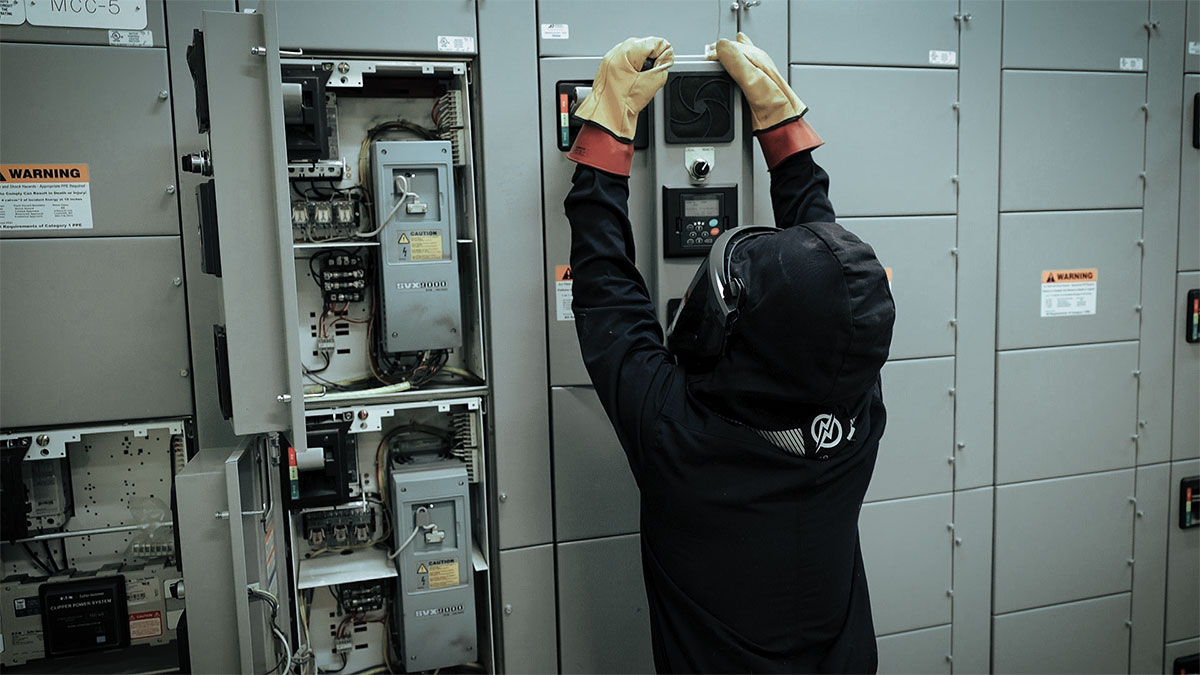


Find Us on Socials